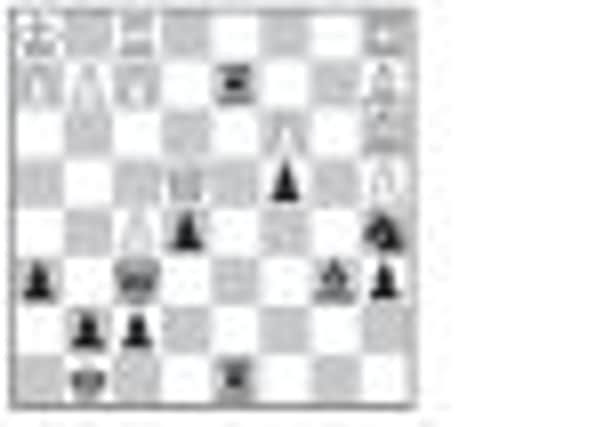Chess: How does Black win?


THE Tata Steel tournament, in Wijk aan Zee, in the Netherlands, is a truly spectacular smorgasbord of an event.
Traditionally, the tournament has been held with three sections – labelled A, B, and C – with the A-group featuring the world’s top players, though grandmasters also make up most of the B field and a significant portion of the C field.
Advertisement
Hide AdAdvertisement
Hide Ad“Wijk”, as its affectionately known as, has also always been run on traditional lines. No Sofia Rules, no newfangled Bilbao scoring system. Just a careful mix of top stars, seasoned professionals and hungry young turks looking to make a name for themselves and decent conditions to encourage all-out fighting chess.
We’re seeing some amazing games at Wijk, and not only that, there has also been a very high volume of decisive games – and the player with the most decisive games in the tournament is the normally solid Sergey Karjakin, of Russia, who has been riding the ultimate roller-coaster ride with a remarkable tally of one draw, four wins and five losses.
Karjakin started with the very unusual pattern in the tournament of losing two and then winning two that was only broken in round eight when he drew with Hikaru Nakamura. And after beating the World No 1, Magnus Carlsen, in round nine, he promptly continued the pattern again by losing to Gata Kamsky.
S Karjakin - G Kamsky
74th Tata Steel GM-A, (10)
Ruy Lopez
1 e4 e5 2 Nf3 Nc6 3 Bb5 a6 4 Ba4 Nf6 5 0–0 Be7 6 d3 b5 7 Bb3 d6 8 a4 Bd7 9 c3 0–0 10 Nbd2 h6 11 Re1 Re8 12 Nh4 b4 13 Ng6 bxc3 14 bxc3 Na5 15 Ba2 Nh7 16 Qh5 Nf6 17 Qf3 c5 18 d4 Qc7 19 Qg3 Bd8 20 dxe5 dxe5 21 Nh4 c4 22 Nf5 Bxf5 23 exf5 Qc6 24 Ba3 Bc7 25 Qe3 Rad8 26 Ne4 Bb6 27 Nxf6+ Qxf6 28 Qe4 Rd2 29 Rf1 Red8 30 Kh1 Nb3! 31 Bxb3 cxb3 32 f4 Qh4 33 Rab1 R8d3 34 Bc1 Rd1 35 Ba3 Rxb1 36 Rxb1 Re3 37 g3 Qh5 38 Qg2 exf4 39 gxf4 Re2 40 Qg3 Qxf5 0–1